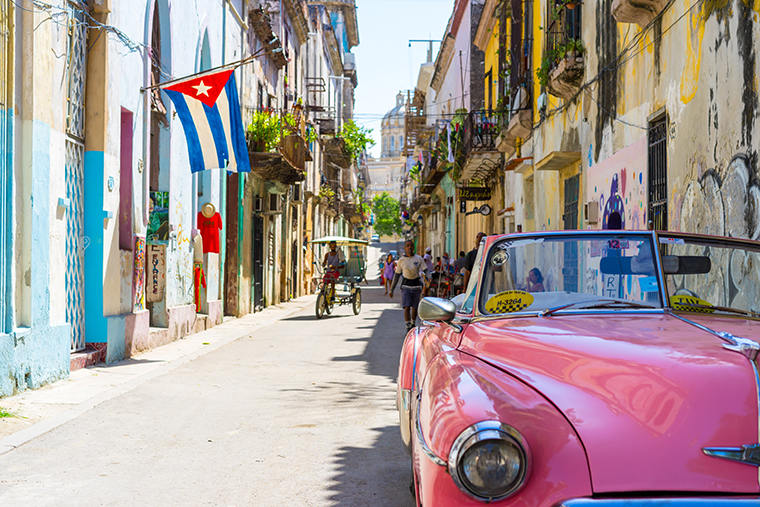Written by: Ashley Ototo
Once upon a time, I traveled 103 miles south of Florida to partake in a celebration – a 25-year celebration to be exact. For my 25th birthday, I decided to continue fostering my wanderlust. I wanted my quarter century experience to begin in a place I had never been before. After 50+ years of tension between the US and Cuba, travel restrictions were finally lifted a year prior under the Obama administration. Obama called it “a new hope” but for many millennials, it was a “new adventure.”
As my girlfriends and I were planning THE trip of the summer, I was excited but also preparing how to face the people of Cuba. My mind swirled with assumptions of how the white, Eurocentric, Latino people of Cuba would stare, take pictures, or ask to touch my hair. In my mind, this had to be true seeing that many of them probably had not left the country in years. The fascination with blackness and what came with it was common and I was practicing how to politely reject such requests. Yet upon my arrival, I quickly realized how inaccurate my stereotypical judgments were.
So where did this perception of Cuban people derive from?
Miami is home to the largest population of Cuban descent in America– the majority of them being white. Before the gates of Cuba were opened, Miami was their representative. Actors, actresses, and other Cuban entertainers on television, or in the media in America, are white. Naturally so, this was the picture I painted of most Cubans. So, what happens when you step off the plane in a country and all of your preconceived notions are simply misconceptions?
As an African-American woman, I felt accepted and immediately embraced by the culture. The black and brown immigration officers, stewardesses, and airport staff made me feel so welcome and so at home. Communication was easier than expected. As someone from Texas where Spanish is inevitably woven into the English dialect, I (along with my other friends) felt comfortable enough to communicate using our collaborative Spanish efforts mixed with the English many natives spoke. “Bienvenido!”, “tu perteneces a Cuba”, and “bailas como un cubano” were just some of the warm welcomes we received throughout the duration of our stay. Although I was basking in the blackness that is Cuba, I had to question why more than 60 percent of people in Cuba were black, but more than 70 percent of Cubans in public leadership positions in Cuba were white, and more than 80 percent of Cubans in America were white.
As one who has traveled to all the corners of the world, it took 25 years to discover such a majestic place. We entered what felt like a time machine – one that placed us back in the 1960s with the “antique” cars and “ancient” architecture. Cuba, beautiful and vibrant as ever, has stood the test of time. Everything from the cars, the buildings, the traditions, the mannerisms, and the culture were preserved – each having a story attached to it. Authenticity permeates throughout the country. You can taste it in the food at Pequeño Suarez and feel it in every interaction. You can see it in the people and the rhythm of their walk. Pride emanates at every corner, in every building, and in every person. Nights are magical at Jardines 1830 and ruled by the catchy and possessive music. You can experience the sheer resilience of the people just with one salsa dance at Casa de la Musica. Vibrant colors complement the land and the overwhelming number of sun-kissed, melanin rich people have redefined the standard of beauty. Cuba’s go with the flow vibe definitely adds an element of gratification that one is destined to have while visiting.
According to a Cuban racial demographic brief done in 2005, over 70 percent of whites are employed and make up less than 50 percent of the country. 65 percent of blacks are unemployed. It can be argued that racism is the driver of systemic oppression as it disproportionately affects Black Cubans significantly. Their continued issues with marginalization and racism is one that mimics the plight of black Americans, but to witness the people’s resilience is magical.
Cuba is definitely one place I recommend black millennials experience. To experience Cuba is to experience life from a different lens. A shared history, a shared fight, and a shared culture was what connected me to Cuba. I got lost in the culture and for a moment, I forgot I wasn’t Cuban.
